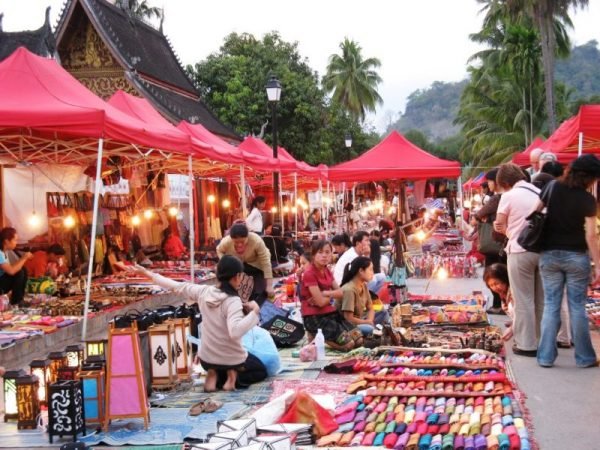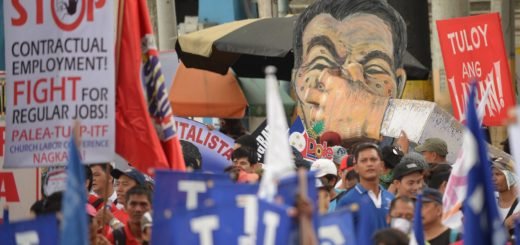The Dynamics of Economic Inequality within ASEAN Group: Amongst highest in the World

ASEAN countries have witnessed thriving economic growth and development in the last 2 decades. There have been many technological advancements and strategical approaches followed up. Gross domestic product (GDP) has reached US$2.4T and is still growing at a yearly aggregate of 5 per cent. Intra ASEAN trade has grown from $10B in 1967 to $2.3T in 2015. Whilst the financial prudence climbs, the disparity of wealth corrupts social equality, values and freedom; when a small group of dominating upper class sitting at the top running everything and enjoying luxury. ASEAN group struggling amidst of descent as economic inequalities and abuse of power are aggravated.
The high level of economic growth in ASEAN countries has not resulted in welfare improvement especially in the case of the poor since they have failed to gain any benefits in comparison to the rich. Financial disparities are ravaging enough of the region as in any other part of the world. As per 2018 global multidimensional poverty index (MPI) rebased by the united nations development programme (UNDP) and human development initiative (OPHI) suggests high incidences of poverty in the south Asian region.
The economic indicators of inequality direct towards greater polarisation and this divergence is perpetually climbing. Even though the South Asia region is home of the largest number of the poor in the world, this phenomenon stands in contrast to the highest number of dollar billionaires this region produces today. The lack of equitable access to resources, jobs, market affordability and human development is all too pervasive.

Rising Economies with Inequality of Wealth
Income Quintile Share Ratio: reveals an even larger gap between the rich and the poor. In Indonesia, the top 4 richest men produce more wealth than the poorest 100M people and about 50 per cent of the country’s wealth is in the hands of the top 1 per cent. In the Philippines, the average annual family income of the top 10 per cent is estimated at US $14,708 in 2015, nine times more than the lowest 10 per cent at US $1,609. The top 10 per cent in Thailand earns 35 times more than the bottom 10 per cent and the richest 1 per cent controls 58 per cent of the country’s economy. In Vietnam, 210 richest of the country generate more than enough per year to alleviate 3.2M people out of hunger & scarcity. The tiny elite at top earns more in a day than the impoverished individual could make in 10 years.
Palma Ratio: records that the bottom 40 per cent of the population in the region is not only condemned to face difficulties but also unceasingly compelled to remain in the same situation. The combined share of the lower 40 per cent of GNI (Gross National Income) is a little more than half of that top elite 10 per cent. The share of the bottom 40 per cent has been reduced in almost every county between 2010 and 2019.
Gini Coefficient: a measure in which 0 is perfect equality and 1 is perfect inequality, has increased in the more developed ASEAN nations such as: Indonesia (39 in 2018), Laos (36.4 in 2012), Malaysia (41 in 2015), Myanmar (30.7 in 2017), Philippines (44.4 in 2015), Singapore (45.8 in 2016), Thailand (36.4 in 2018) and Vietnam (35.7 in 2018). That puts them almost on a level with China at 46.5.
ASEAN group performance in the three indicators, Income Quintile Share Ratio, Palma Ratio and Gini Coefficient shows a state of continuous deteriorating inequality. ASEAN countries are ineffective to make use of the economic growth in the region to improve the social welfare of the poor and reduce the widespread imbalance of living standard amongst the different groups. We are progressing towards a future, which is more bounteous than before but the progressive wealth created by the majority is shared by a small section of the population, negating a huge portion in absolute hardship.

Gender Inequality
Women’s contribution to the economy, through their household work, is yet to be considered a component of the GDP. Women’s contribution to the ‘care economy’- reproducing, cooking, cleaning, bearing and caring for children, caring for other family members- is largely ignored. Globally, if women participated in the economy with full potential and in identical roles to men, that would add up to the US $28T, 13 or 26 per cent to the annual global GDP by 2025. As per the South-Asia inequality report, “women perform 80 per cent of the total hours of unpaid care work, on average 4.1 times more than men”.
If the care economy and other labour contributions made by women were included in the GDP, the national income is likely to double. However, the structural and systemic exclusion of women’s voices means that such contributions remain unaccounted and unrecognised, therefore rendering them all the easier for greater exploitation. As long as women do not have equal access to schooling, employment opportunities and the state does not provide support through social welfare systems for the care of children, maternity and paternity leave, care of the elderly, free health care for the poor, women will continue to fill the gaps of all basic labour needs both in the domestic and the public spheres.
Conclusion
South Asia’s share of the poor in the world increased from 27.3 per cent to 48 per cent between 1990-2017; accommodate almost half of the world’s multidimensional poor people. This increase in the number of global poor in ASEAN countries has placed this region in the position of one of the most unequal regions of the world.
The South Asian population increased by roughly 29 per cent between 2000 and 2017 and the GDP increased by 500 per cent. However, along with this rapid economic growth a growing infrastructure gap has also created, which has broad implications for the environment and social development inequality also increased at a large scale at the same time. The strong economic growth within ASEAN is of substantial potential which can help to drive as the key tool of placating and emanates immense promise for the future of economic welfare for all.



















